I’ve seen too many plumbing systems fail early due to corrosion. The damage and costs could have been avoided with proper prevention strategies.
Preventing fitting corrosion requires selecting corrosion-resistant materials like plastic or stainless steel, controlling environmental factors like moisture and chemical exposure, applying protective coatings, and following regular maintenance schedules. Different materials need specific protection methods based on their installation environment and usage conditions.
Let me share practical solutions that actually work based on years of field experience.
What Material Selection Prevents Pipe Fitting Corrosion Most Effectively?
Material choice is your first defense against corrosion. I’ve watched clients save thousands by choosing the right materials from the start.
The most effective materials for preventing pipe fitting corrosion are non-metallic options like PP-R, CPVC, and PVC, which are completely immune to rust and electrochemical corrosion. For metal applications, stainless steel (especially 316 grade) and brass offer excellent corrosion resistance, though at higher cost than traditional steel options.

Understanding Material Corrosion Resistance
Choosing the right material is the most fundamental decision in corrosion prevention. Different materials resist corrosion in different ways, and understanding these mechanisms helps in making the best selection.
Non-metallic materials provide complete protection against common corrosion types. Plastic pipes and fittings made from PP-R, CPVC, or PVC cannot rust or undergo galvanic corrosion because they contain no metal. They’re also resistant to chemical corrosion from water treatment chemicals and soil conditions. This makes them ideal for most residential and commercial plumbing applications.
Metal Material Options
When metal fittings are necessary, some options perform much better than others:
Stainless Steel: This contains chromium which forms a protective oxide layer when exposed to oxygen. The layer is self-healing – if scratched, it reforms quickly. Grade 304 works for most environments, while 316 offers better resistance in coastal areas with salt exposure.
Brass and Bronze: These copper alloys resist corrosion well, especially in water applications. They’re more expensive but last much longer than regular steel fittings. The copper content provides natural protection against rust.
Galvanized Steel: These steel fittings have a zinc coating that sacrifices itself to protect the underlying steel. While better than plain steel, the protection is temporary and fails once the zinc layer deteriorates.
Material Selection Guide
| Material Type | Best Applications | Устойчивость к коррозии | Cost Level |
|---|---|---|---|
| PP-R/CPVC Plastic | Residential water systems, chemical transport | Excellent – immune to rust and electrolysis | Low |
| Stainless Steel 316 | Coastal areas, chemical plants, high humidity | Excellent – resists most corrosion types | High |
| Brass/Bronze | Marine applications, valve bodies, connectors | Very Good – natural corrosion resistance | Medium-High |
| Galvanized Steel | Outdoor applications, temporary installations | Fair – temporary protection only | Low-Medium |
| Black Steel | Non-water applications, gas lines | Poor – corrodes quickly in moist environments | Lowest |
Making the Right Choice
For most plumbing applications, plastic materials like PP-R provide the best balance of corrosion resistance and cost-effectiveness. They eliminate corrosion concerns entirely while being easy to install and maintain. This is why we at IFAN recommend PP-R systems for most water applications – they simply don’t corrode, which solves the problem at its root.
Which Environmental Factors Accelerate Corrosion in Plumbing Fittings?
Understanding your environment is crucial. I’ve inspected failed systems where the environment wasn’t considered during material selection.
Environmental factors that accelerate corrosion include moisture presence, chemical exposure (chlorides, acids, alkalis), soil composition (for buried pipes), temperature fluctuations, electrical currents, and atmospheric pollutants. High humidity combined with salt exposure creates the most aggressive conditions for metal fitting deterioration.
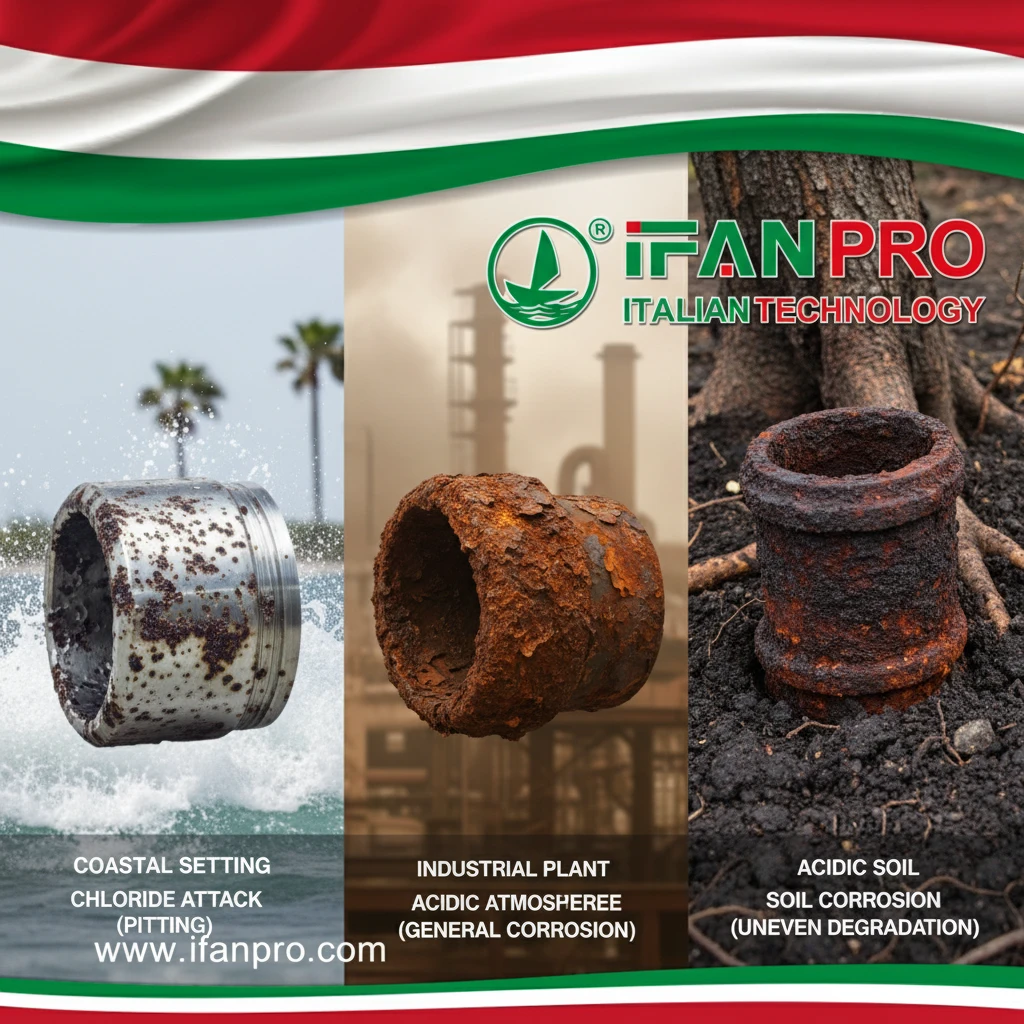
The Role of Moisture and Chemicals
Corrosion needs an electrolyte to occur, and water serves this purpose perfectly. The presence of moisture alone can cause corrosion, but certain chemicals dramatically accelerate the process.
Chlorides from sea spray or road salts are particularly destructive. They break down the protective oxide layers on stainless steel and accelerate pitting corrosion. Acids from industrial pollution or soil conditions eat away at metal surfaces. Even treated drinking water can be corrosive if it has extreme pH levels or high mineral content.
Soil and Atmospheric Conditions
Buried pipes face unique challenges. Soil corrosivity depends on factors like:
Resistivity: Low resistivity soils (high moisture and salt content) conduct electricity better and cause faster corrosion.
pH Level: Acidic soils (pH below 7) are more corrosive than neutral or alkaline soils.
Aeration: Well-drained soils with oxygen support different corrosion mechanisms than waterlogged, oxygen-free soils.
Atmospheric conditions matter too. Industrial areas with sulfur dioxide pollution experience acid rain formation. Coastal regions have salt-laden air. Urban environments may have various chemical pollutants that settle on fittings and initiate corrosion.
Environmental Risk Assessment
| Environment Type | Key Risk Factors | Recommended Materials |
|---|---|---|
| Coastal/Marine | Salt spray, high humidity | Stainless steel 316, Plastic fittings |
| Industrial | Chemical pollution, acid rain | Plastic fittings, coated stainless steel |
| Underground | Soil moisture, chemical composition | Plastic fittings, heavily coated steel |
| Indoor Humid | Condensation, high moisture | Plastic fittings, brass, stainless steel |
| Swimming Pools | Chlorine compounds, constant moisture | Specialized plastics, 316 stainless steel |
Temperature and Electrical Factors
Temperature changes affect corrosion rates. Higher temperatures generally accelerate chemical reactions, including corrosion. Thermal cycling (heating and cooling) can crack protective coatings, allowing corrosion to begin.
Stray electrical currents cause electrolytic corrosion. This happens when electrical systems aren’t properly grounded, and currents travel through pipes instead. Even small voltages can cause significant metal loss over time. This is why proper electrical bonding of plumbing systems is critical in corrosion prevention.
How Do Protective Coatings Prevent Corrosion in Metal Pipe Fittings?
Coatings provide crucial protection when metals must be used. I’ve seen properly coated fittings last decades in harsh conditions.
Protective coatings prevent corrosion by creating a physical barrier that separates metal surfaces from corrosive environments. Advanced coatings like epoxy and zinc alloys provide additional protection through sacrificial action (galvanizing) and chemical resistance, while proper surface preparation ensures the coating adheres properly and lasts longer.
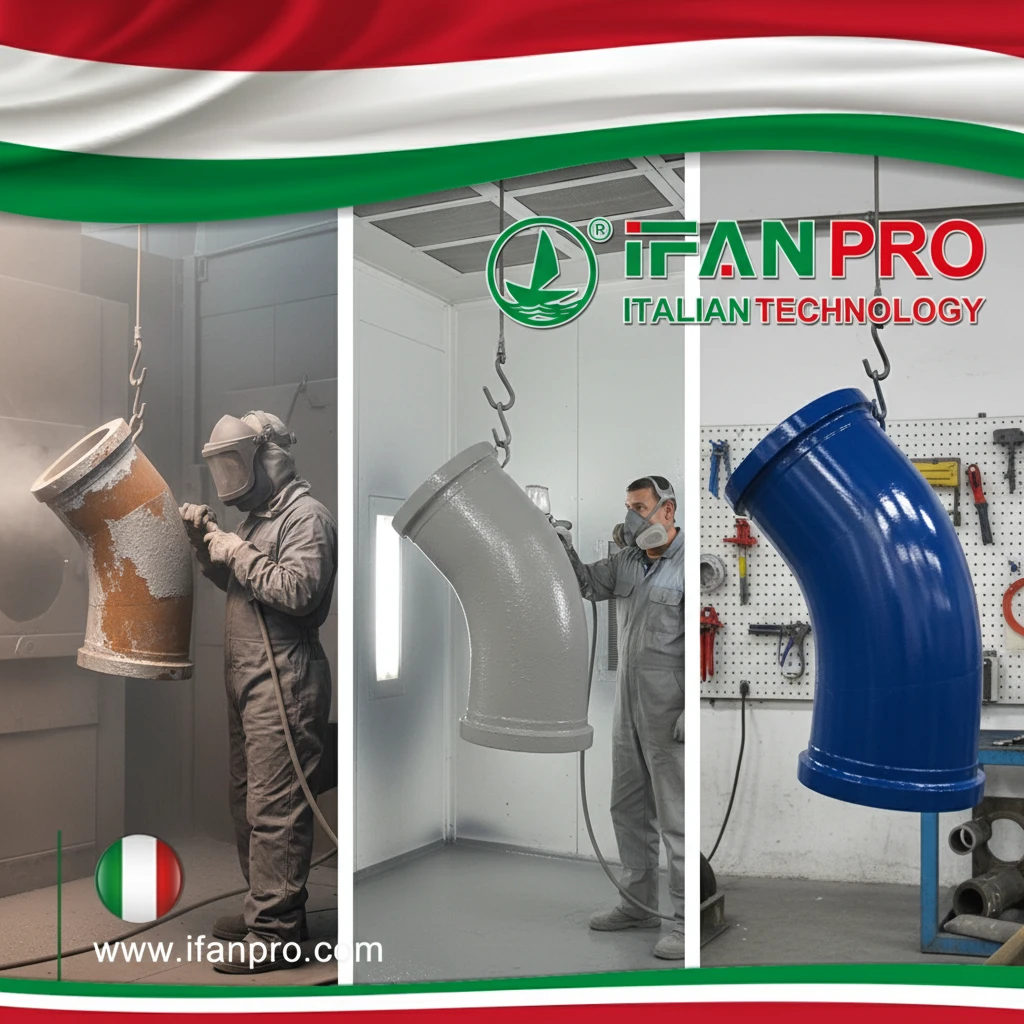
Barrier Protection Mechanism
The primary function of any protective coating is to act as a barrier. By completely covering the metal surface, coatings prevent water, oxygen, and corrosive chemicals from reaching the underlying metal. This simple concept is highly effective when implemented correctly.
Different coating materials provide barrier protection with varying effectiveness. Plastic coatings like polyethylene and epoxy create non-porous barriers that block moisture completely. Paint systems work by forming a continuous film that isolates the metal from its environment. The thickness and integrity of this barrier determine its protective lifespan.
Sacrificial Protection Methods
Some coatings provide more than just a barrier – they actively protect the underlying metal through sacrificial action:
Galvanizing: Zinc-coated (galvanized) steel works because zinc is more electrically active than steel. When the coating is scratched, zinc corrodes preferentially, protecting the steel beneath. This sacrificial protection continues until the zinc layer is completely consumed.
Thermal Spray: Aluminum or zinc can be thermally sprayed onto steel surfaces. This creates a protective layer that both barriers and sacrifices to protect the base metal, similar to galvanizing but applicable to larger structures.
Coating Application Process
Proper application is as important as the coating material itself. The three critical steps are:
Surface Preparation: This is the most crucial step. Surfaces must be clean and properly profiled. abrasive blasting removes mill scale, rust, and contaminants while creating a surface profile that improves coating adhesion.
Primer Application: Primer coats improve adhesion and provide additional corrosion inhibition. Some primers contain corrosion-inhibiting pigments that actively suppress corrosion at the metal-coating interface.
Topcoat Application: The final coating provides the main barrier protection. Multiple coats are often applied to ensure complete coverage and build sufficient thickness for long-term protection.
Coating Performance Comparison
| Coating Type | Protection Mechanism | Expected Lifespan | Best Applications |
|---|---|---|---|
| Hot-Dip Galvanizing | Sacrificial + Barrier | 20-50 years | Outdoor structures, industrial settings |
| Epoxy Coating | Barrier Protection | 10-20 years | Chemical plants, water treatment |
| Polyurethane | Barrier Protection | 10-15 years | Architectural, decorative applications |
| Zinc-Rich Primer | Sacrificial + Barrier | 15-25 years | Industrial maintenance, shipbuilding |
| Plastic Dip Coating | Barrier Protection | 10-20 years | Furniture, consumer products |
Inspection and Maintenance
Even the best coatings require inspection and maintenance. Regular visual inspections should check for:
- Cracks or holes in the coating
- Blistering or peeling
- Rust spots or staining
- Mechanical damage from impact
Touch-up repairs should be made immediately when damage is found. The damaged area must be cleaned to bare metal, primed, and recoated using compatible materials. Prompt maintenance prevents small defects from becoming major corrosion problems.
What Maintenance Schedule Prevents Corrosion in Different Fitting Materials?
Regular maintenance catches problems early. I’ve helped clients implement simple schedules that prevent major failures.
A good maintenance schedule includes visual inspections every 6 months, detailed annual inspections, immediate repair of any coating damage, regular cleaning of exposed fittings, and monitoring of water quality parameters. The specific frequency and methods depend on the material type, environment, and application criticality.
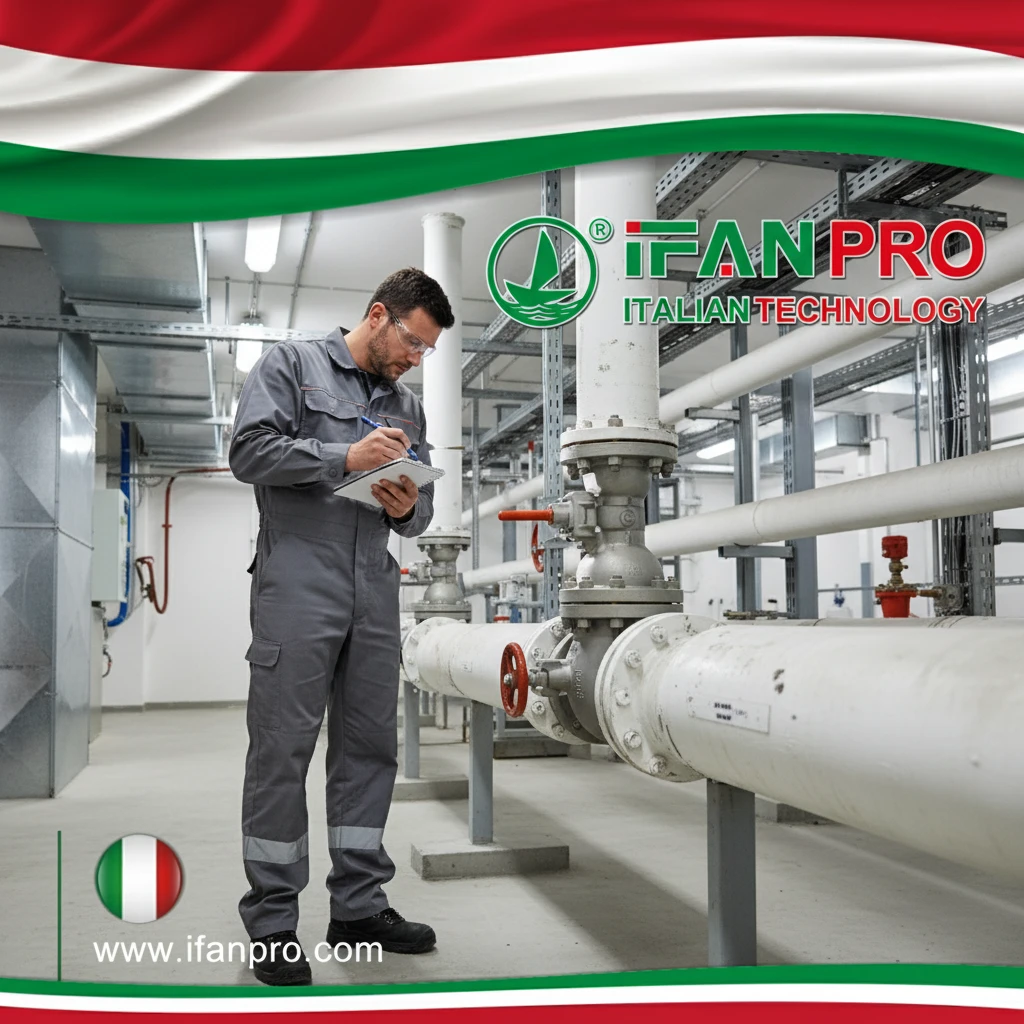
Inspection Frequency and Methods
Different materials and environments require different inspection schedules. A one-size-fits-all approach doesn’t work for corrosion prevention.
For most residential applications, visual inspections every six months are sufficient. Look for signs of corrosion like discoloration, staining, or rust spots. In high-risk environments like coastal or industrial areas, quarterly inspections may be necessary. Critical industrial applications might require monthly inspections with detailed documentation.
Material-Specific Maintenance Approaches
Each material type needs specific maintenance attention:
Plastic Fittings (PP-R, CPVC): Maintenance is minimal. Check for UV degradation in sunlight-exposed areas (plastics can become brittle). Inspect for mechanical damage or stress cracks. Ensure supports are adequate to prevent sagging or stress.
Stainless Steel: Keep surfaces clean and free of deposits. Remove any rust stains promptly – they can initiate pitting. Avoid using steel brushes or tools that can embed iron particles. Ensure oxygen can reach the surface to maintain the protective oxide layer.
Galvanized Steel: Monitor the zinc coating condition. Touch up damaged areas with zinc-rich paint. Watch for white rust (zinc corrosion products) which indicates the protective coating is being consumed.
Brass and Bronze: Watch for dezincification (selective leaching of zinc) which appears as red or pink areas. Check for stress corrosion cracking in high-tension applications.
Maintenance Schedule Template
| Материал | Inspection Frequency | Key Maintenance Tasks | Warning Signs |
|---|---|---|---|
| Plastic (PP-R) | Annual | Check for cracks, UV damage | Brittleness, discoloration |
| Stainless Steel | 6 months | Clean surfaces, check for rust | Rust stains, pitting |
| Galvanized Steel | 3-6 months | Touch-up coating damage | Red rust, coating loss |
| Brass/Bronze | Annual | Check for dezincification | Pink/red coloration |
Proactive Maintenance Strategies
Beyond regular inspections, proactive maintenance includes:
Environmental Control: Use dehumidifiers in enclosed spaces to reduce moisture. Install drip trays or drainage to prevent water accumulation. Improve ventilation to reduce condensation.
Water Treatment: Monitor and control water pH, oxygen content, and chemical treatment levels. Sudden changes in water quality can accelerate corrosion.
Catholic Protection: For buried or submerged metal fittings, impressed current or sacrificial anode systems can provide additional protection. These require specialized design and monitoring.
Record Keeping: Maintain detailed records of inspections, repairs, and corrosion incidents. This helps identify patterns and predict when more extensive maintenance will be needed.
Emergency Response
Despite best efforts, corrosion problems can still occur. Have an emergency response plan that includes:
- Immediate isolation of leaking sections
- Temporary repair procedures
- Contact information for repair services
- Replacement part availability
Quick response to corrosion failures minimizes damage and downtime. Keeping critical spare parts on hand ensures repairs can be made promptly.
Заключение
Preventing fitting corrosion requires the right materials, environmental control, protective coatings, and regular maintenance. For reliable corrosion-resistant solutions, choose IFAN’s PP-R fittings and professional plumbing support.

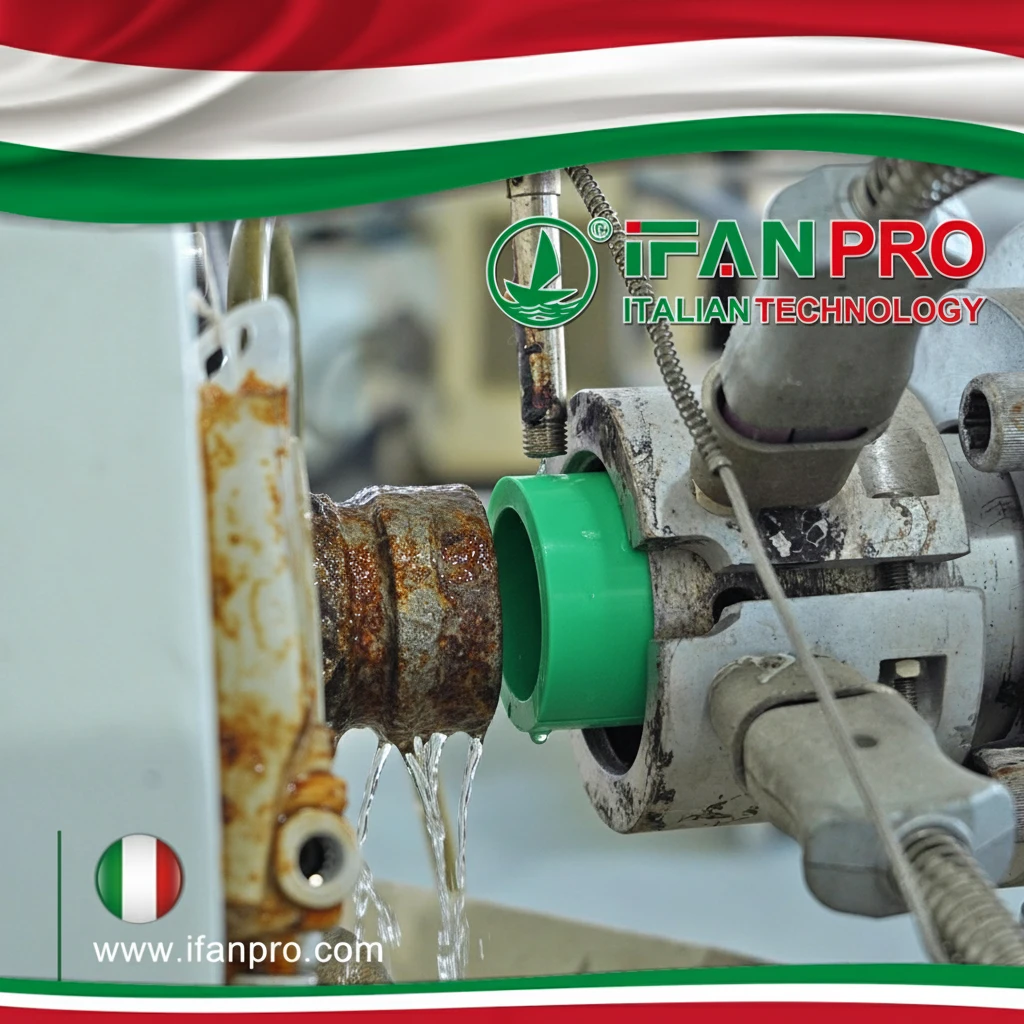
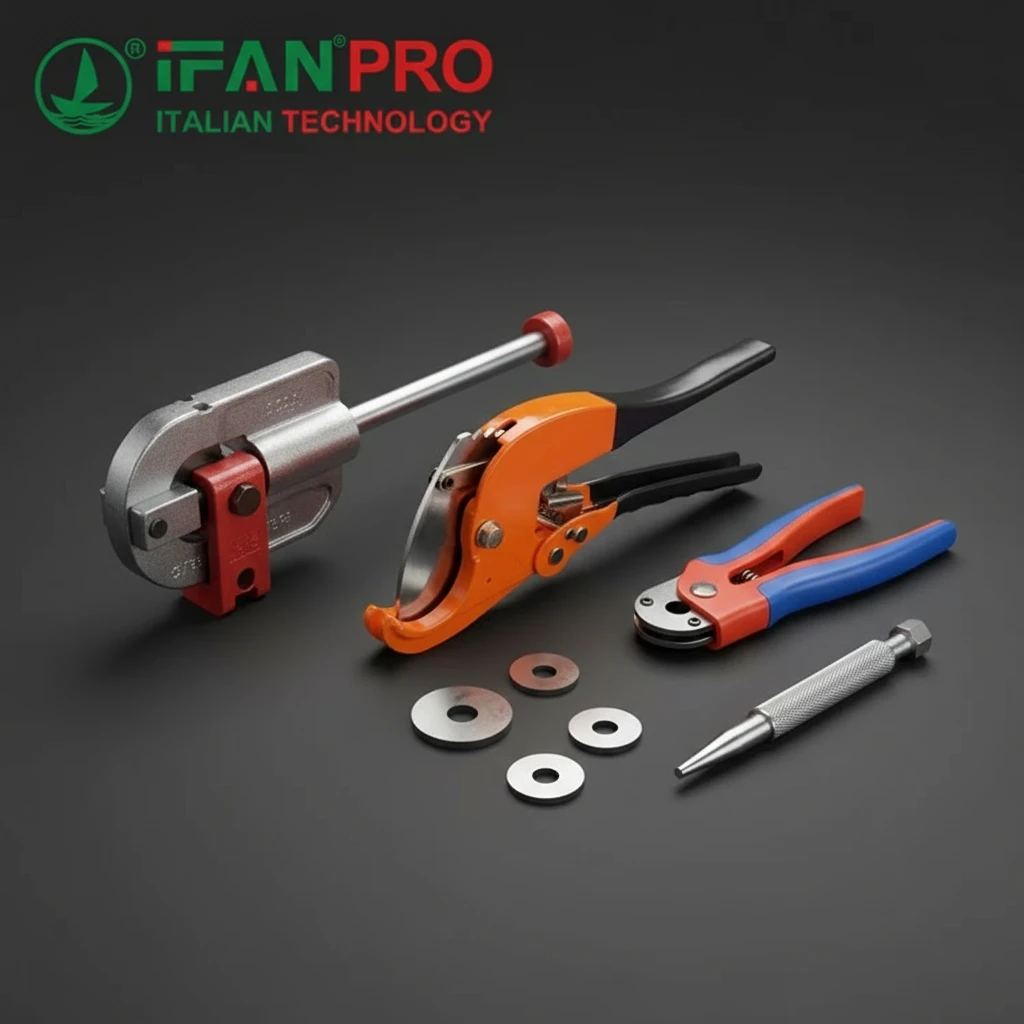

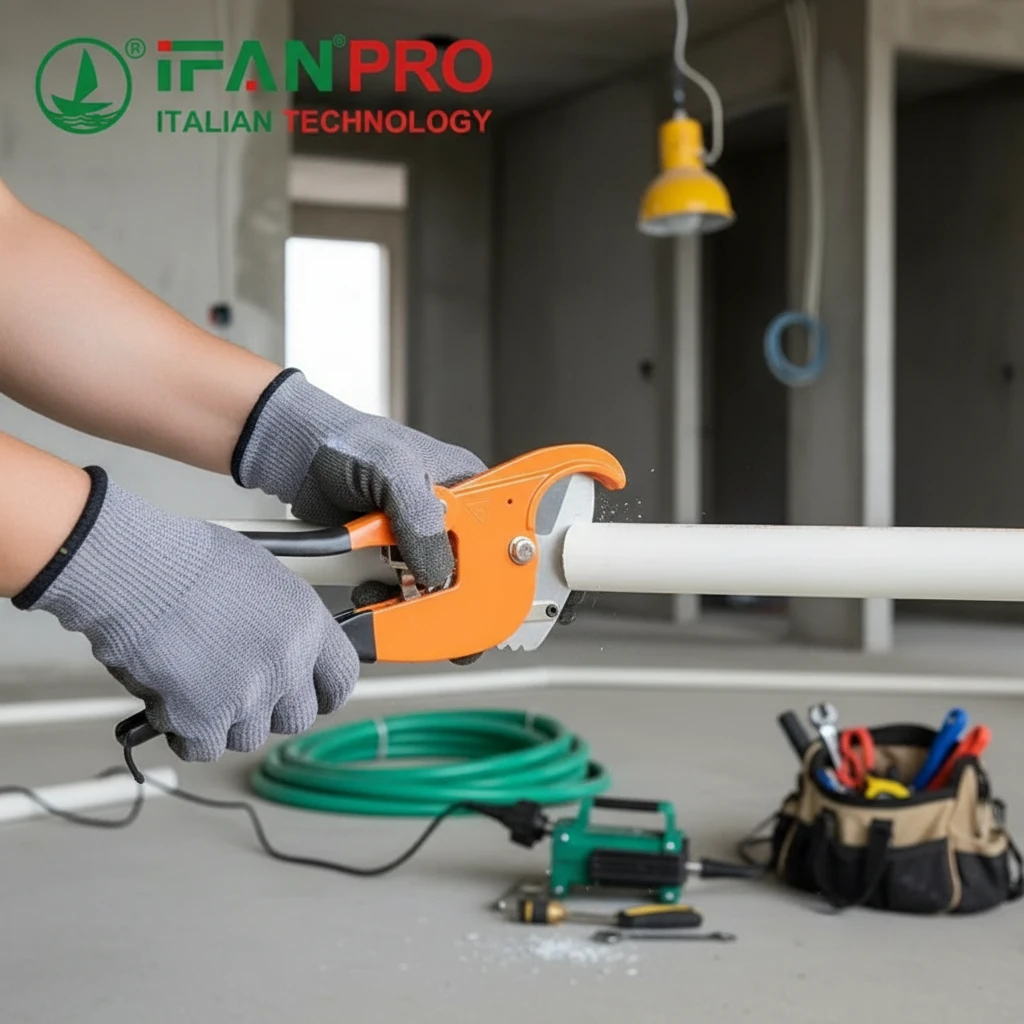









Последние комментарии